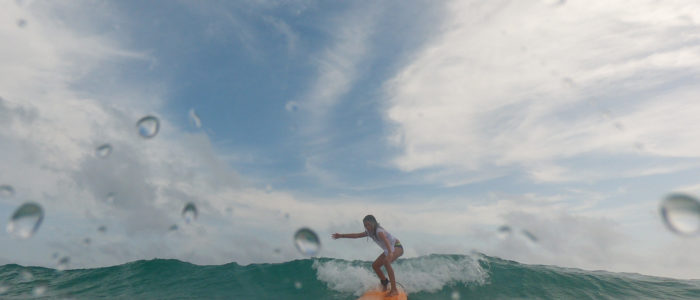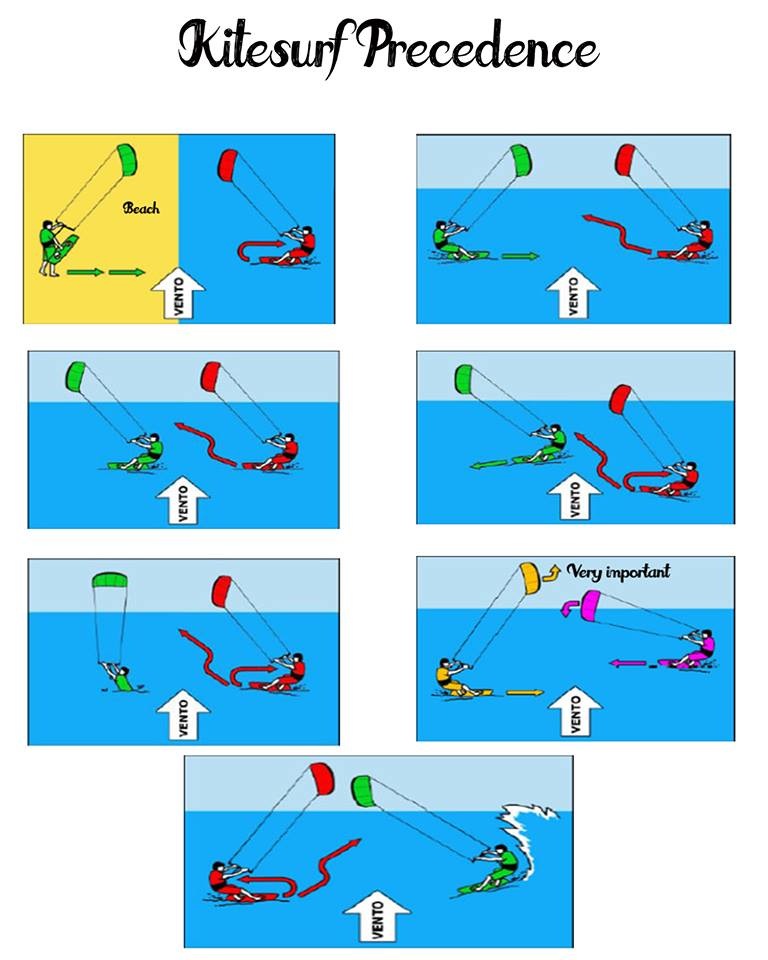Safety and precedence in Kitesurfing…everything you need to know!
Safety and respect for precedence for an aware sport
Safety and respect for precedence for an aware sport. In these days a dear friend of mine had an accident with his kite in a damn spot; all in all it went well for him but I wanted to take the opportunity to remind you of the safety standards or rules that we explain during an initiation course in this beautiful but potentially dangerous sport and that everyone should always keep in mind they are beginners or expert kiters.
Now all new kites have a quick release safety system (quick-release) which allows you to cancel the traction of the kite at any time. When the situation gets out of control the kiter can activate the safety system and detach himself from the kite itself. The limitation of these systems is that they must be activated manually in a panic situation and in a very short time. In fact, some kiters have had accidents precisely because they were not able to activate the safety system in time.
But as an advertisement once said “prevention is better than cure” and the quick-release must only be the last resort. In a kitesurfing course we teach to prevent dangerous situations, to analyze the spot and the weather conditions before even taking the kite and the board out of the car.
Here are some tips to always keep in mind:
When you arrive at the beach, check the wind direction and never with a wind blowing perpendicular to the beach (on shore or off shore): although it is possible to surf in these conditions, the risk of accidents increases. The best direction is with wind parallel to the beach (side-on-shore).
Don’t launch your kite and don’t land it with people and obstacles downwind, consider a minimum distance of 50m (one and a half times the length of the lines).
Always check the condition of the kite and lines before launching it (Lines-check).
Do not ask anyone who is not an experienced kiter for assistance in launching or landing.
Always use the safety leash.
Make sure that downwind of your spot there is an area, a beach suitable for reaching downwind or body dragging in case of difficulty.
Launch keeping the kite low in the direction of the sea to prevent it from lifting you up. The risk is of being lifted by gusts of wind at high altitudes, and no recovery maneuver can be performed from that position.
Accidents are often due to stupid and non-sensical behaviors that damage kitesurfing a lot which already gives it a bad reputation on some beaches and is often banned or confined as we well know. We collaborate in the diffusion of the kite by promoting its safety.
Kitesurfing is a sport that is practiced in a shared space with other people and since fortunately there are more and more of us in recent times, it was necessary to give a general order always guided by common sense. Both IKO and ISAF, of which our FIV is a part, have drawn up a real list of simple but effective rules of precedence in the water and on land valid in all spots in the world.
Anyone who goes out to sea, therefore leaves the beach has precedence over anyone returning. If you want to get back to the beach but you see someone leaving, you have to give way, so wait and go a couple more edges.
If you cross another kiter at sea, whoever is on starboard tack has precedence over whoever is on port tack (so whoever is with the left hand in the direction of travel or fly from 9am to 11am). Whoever is on port tack must change trajectory or pass downwind.
If you go faster than another kiter you have to give way to the slower rider. You must then pass downwind or change direction and turn back.
If you meet another upwind kiter you have to raise the wing as much as possible towards the zenith, while the one who is downwind has to lower the wing as much as possible.
If you are surfing over a wave you have precedence over anyone going in the opposite direction or anyone jumping.
If you are in an area used as a tourist beach, you must give priority to other users of the beach and the sea in front of it.
If you intend to make a jump you must make sure you have a clear area downwind of at least 50 meters and upwind of at least 30 meters and nobody in the trajectory.
We go to sea and we love this sport because it gives us this great sense of freedom and gives us unique emotions that we share in a group and in a group we help each other because this is still an extreme sport and each one before inflating must be aware of its limitations.
Click here for info on our courses!
Have good wind Locals!!!





